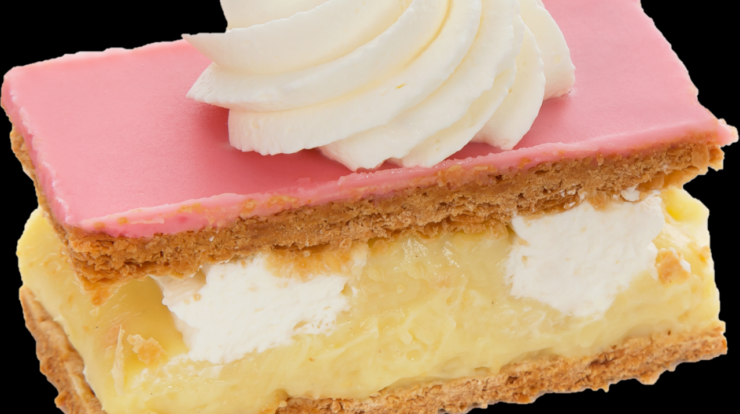
Tompouce, a delectable Dutch pastry, tantalizes taste buds with its flaky puff pastry, creamy filling, and sweet glaze. Originating in the Netherlands, it has become a beloved treat across Europe and beyond, captivating hearts with its unique blend of flavors and textures.
The journey of tompouce begins in the 18th century, where it emerged as a variation of the French mille-feuille. Over time, it evolved into a distinct pastry, characterized by its rectangular shape and generous filling. Today, tompouce holds a cherished place in Dutch culture, often gracing festive tables and afternoon tea gatherings.
Tompouce History
Tompouce, a beloved pastry, traces its roots to the Netherlands in the 19th century. Originally known as “tompouce,” the name is thought to derive from the French “pompe,” meaning “pump,” possibly referring to the shape of the pastry.
In its early days, tompouce was a simple puff pastry filled with fruit preserves. Over time, it evolved to incorporate a creamy filling and a layer of pink fondant glaze, becoming the iconic treat we know today.
Tompouce gained popularity throughout Europe, particularly in countries like Belgium, France, and Germany, where it became a staple of pastry shops and cafes.
Tompouce Ingredients and Variations
A traditional tompouce consists of three layers of puff pastry, sandwiched between two layers of creamy filling, typically vanilla or chocolate flavored.
The filling is usually made with a combination of milk, sugar, eggs, flour, and flavoring. Some variations may include fruit preserves or whipped cream.
The signature pink glaze is made from fondant, a sugar paste that gives the tompouce its characteristic glossy appearance.
Regional variations in tompouce can be found across Europe. In Belgium, for example, the pastry is often filled with a frangipane cream, while in France, it may be topped with a chocolate glaze instead of fondant.
Tompouce Preparation Techniques
Creating a perfect tompouce requires precise technique and attention to detail.
The puff pastry is made by rolling and folding layers of dough and butter, creating a flaky and airy texture.
The filling is prepared by whisking together the milk, sugar, eggs, and flour until it thickens into a custard. It is then spread between the layers of puff pastry and chilled to set.
Finally, the tompouce is glazed with a layer of fondant, which is heated until it becomes smooth and glossy.
Tompouce Presentation and Serving
Traditionally, tompouce is presented as a rectangular pastry, cut into individual slices.
In recent years, creative variations have emerged, such as mini tompouces, bite-sized versions, and even tompouce cakes.
Tompouce can be served as a dessert or a sweet snack, often accompanied by coffee or tea.
Final Conclusion

Tompouce stands as a testament to the culinary artistry of the Netherlands, a delightful treat that embodies the country’s rich pastry-making traditions. Its combination of delicate pastry, luscious filling, and sugary glaze creates an unforgettable taste experience, leaving a lasting impression on all who indulge in its sweet embrace.
Q&A
What is the origin of tompouce?
Tompouce originated in the Netherlands in the 18th century as a variation of the French mille-feuille.
What are the key ingredients in tompouce?
Tompouce is made with puff pastry, cream filling, and a sweet glaze.
What are some regional variations of tompouce?
Regional variations of tompouce include different fillings, such as fruit or chocolate, and glazes, such as chocolate or caramel.